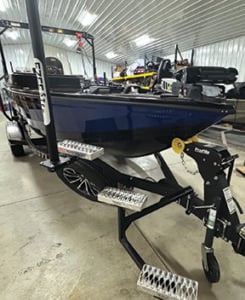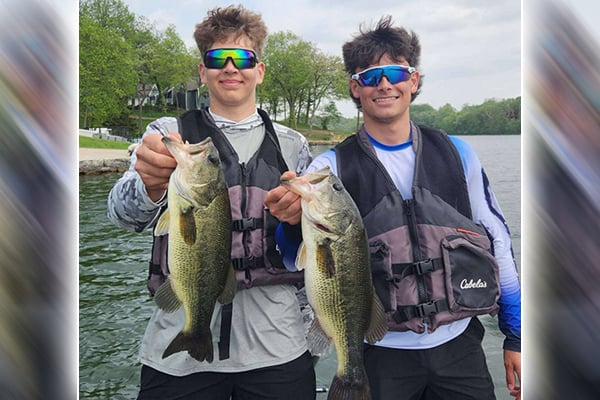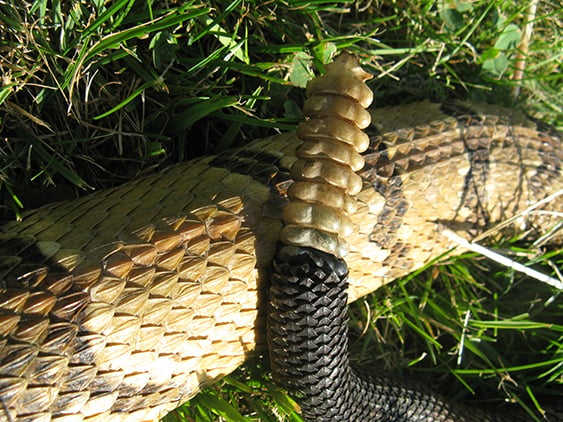Here’s how to work the remarkably weedless, deadly effective bladed jig – Outdoor News
Outdoor News may earn revenue from products shown on this page by participating in affiliate programs. Click here to learn more.
It was a blustery fall day with temperatures in the 40s and a slicing north wind that pushed water temperatures into the low 50s.
In my mind, it was perfect for a spinnerbait spun over the top of weeds in the shallow, southern Michigan lake. That’s been my go-to bait for early- and late-season bass fishing for the past two decades.
But I’m an old guy, and neighbor kid Carter Grewett is a more forward thinker. He opted for a chatterbait, generically known as a bladed jig, and quickly proved that his choice was the “soup of the day” for local bass.
The 14-year-old lad wrecked ’em, catching his limit that included a personal best – a 4-pound, 3-ounce largemouth. Once I put my spinnerbait down, I managed to catch a few, too.
That wasn’t my first introduction to a bladed jig, but it was definitely a convincing eye-opener as to how uniquely effective it can be.
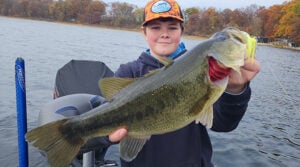
The chatterbait has been around for at least a decade and is remarkably weedless. It’s called a “bladed jig” because it has a hexagon-shaped blade ahead of a basic weighted, skirted jig. The blade wobbles wildly from side to side and kicks out crazy vibrations.
The Z-Man Chatterbait was the original bladed jig, but the company’s pricier Jack Hammer has become a top choice among many serious anglers who say it responds faster and puts out a more noticeable “thump” during the retrieve.
It’s become so popular that several companies offer their own versions. The Strike King Thunder Cricket is another popular model among dozens of other companies’ offerings.
Regardless of the brand, bladed jigs are easy to fish. Under most conditions, you simply chuck it out and wind it in, keeping it just above the vegetation or cover. You’ll feel — and even see — the crazy gyrations through the rod tip.
You want the bait ticking the tops of weeds, and there are times when short, side-to-side twitches of the rod add more erratic action. Although not necessary, most experts say it’s more effective when a soft plastic trailer is slid onto the hook.
The trailer adds weight for longer casts and serves as an added attraction, and can add lift to the bait for a slow presentation.
MORE BASS COVERAGE FROM OUTDOOR NEWS:
Here’s how Minnesota’s Easton Fothergill won on bass fishing’s biggest stage
Jigs and swimbaits are a simple but effective approach for spring bass
How a plan to catch a record fish came together in 1982 on Minnesota’s Pomme de Terre River
Deep-water presentation
Most anglers know that the bladed jig excels during the cooler-water pre-spawn period and fall season when bass move shallow. But this amazing lure, which resembles nothing natural, has become far more deadly in many applications.
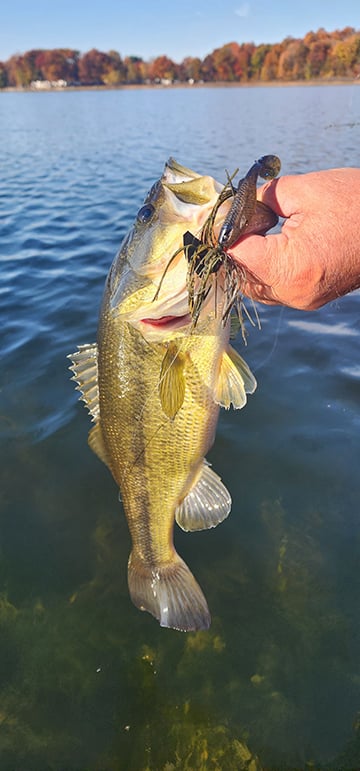 For example, northern Indiana veteran angler Greg Mangus has discovered it can be effective deep during the dog days of summer. In fact, he will fish it along deep weed edges and over structure in places where a plastic worm or jig might seem more practical.
For example, northern Indiana veteran angler Greg Mangus has discovered it can be effective deep during the dog days of summer. In fact, he will fish it along deep weed edges and over structure in places where a plastic worm or jig might seem more practical.
“Bass, oftentimes the bigger bass, will be along deeper weedlines and hold in smaller clumps of grass, waiting to ambush something swimming by,” Mangus says. “I figured if it was a big bass-catcher shallow, why wouldn’t it work deep? It’s something different the fish don’t see out there.”
The presentation is quite different from the shallow water cast-and-crank technique and may not be as reliable as the lure is when fish are shallow.
But when it’s on, it often catches the biggest fish in the area.
Mangus looks for those grass lines or points that are adjacent to deep water and positions his boat off the edge.
He will cast to the submerged plants and let his bait fall to the bottom, lift it abruptly, and then allow it to fall back toward the bottom.
“I may only move it a foot off the bottom – just enough to feel it vibrate,” he says.
Most bites occur as the lure falls, and you probably won’t feel a traditional tick, he says, but you will know a fish has grabbed it when you make the next lift.
His bladed jig is 3⁄8- or ½ ounce, depending upon water depth, and he adds a 4-inch Z-man Razor ShadZ as a trailer. The Yamamoto Zako or Strike King Blade Minnow will work as well. Green pumpkin is his favorite color for most natural lakes.
Some anglers prefer paddle-tail swimbaits as trailers, but Mangus says they can adversely affect the vibration. He also rigs the trailer with the flat side down because “it makes the bait glide rather than dig into the weeds.”
And finally, don’t overlook the bladed jig for smallmouths. Those brown fish will knock the rod out of your hands, especially when they’re prowling the flats for baitfish.


